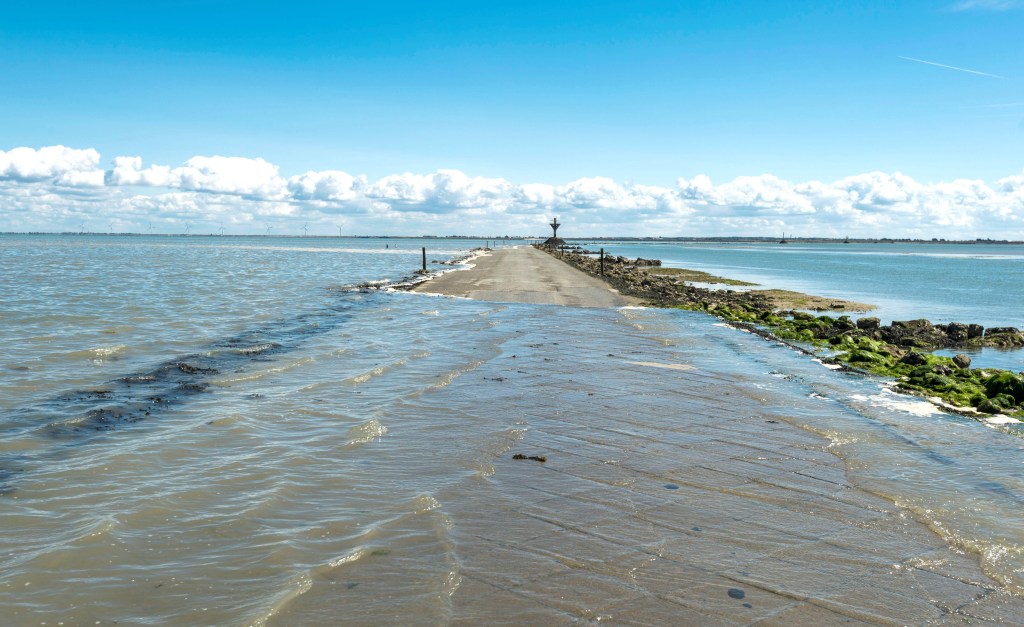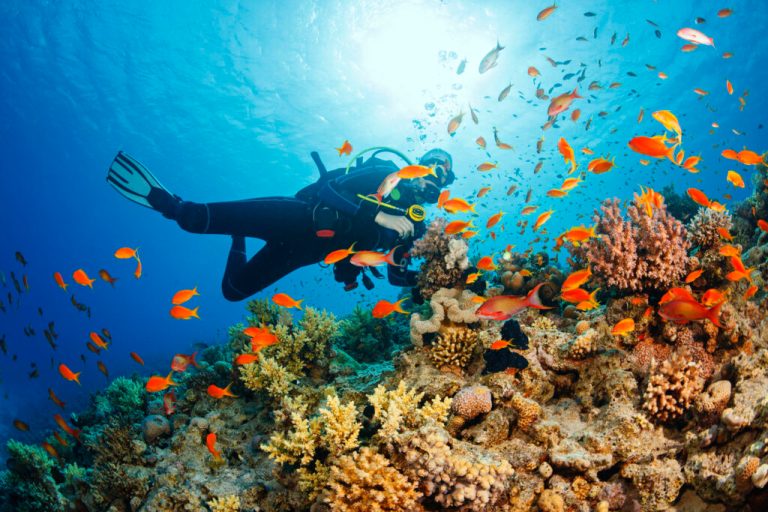There is a road in France surrounded by the sea that is visible one minute and, poof, gone the next. The vanishing act occurs on the Passage du Gois, a captivating causeway that can only be crossed twice daily at low tide. The tide eventually rises again and the road is dramatically covered up by 4 to 13 feet of water.
Located in the Bourgneuf Bay on the Atlantic coast, the Passage du Gois is a 2.6-mile-long road spanning between the town of Beauvoir-sur-Mer on the mainland and the island of Noirmoutier. For two short windows of time each day, the road is accessible for one and a half hours before and after low tide.

Drivers are advised to plan ahead; the Noirmoutier tourist office offers a valuable real-time tidal table to determine whether it’s safe to cross to the other side. If travelers drive during low tide, they shave 20 minutes off the time it would take them to cross using the next closest crossing point — the Noirmoutier Bridge.
It’s not surprising that the disappearing and reappearing road is a popular tourist attraction. According to a 2021 Noirmoutier Island report, 387,823 crossings were made that year and the Passage du Gois continues to be a bucket list trip for many. “Beautiful, powerful, unique, and spectacular!” one Tripadvisor reviewer commented, with another adding that it’s “Extraordinary to see at high tide and then drive over at low tide.”
This fascinating causeway can trace its history back millions of years, when two intersecting ocean currents pushed up enough silt to form a “natural” passageway between Noirmoutier Island and the mainland. In 1689, the Passage du Gois was mentioned in writing by military engineer Sébastien Le Prestre, Marquis de Vauban, and it’s believed to have first appeared on a map in 1701.
As an important point of access to the island, the road was improved and reinforced over the following centuries with the addition of buoys, foundations, stone walls, and ramps at the exits. It was subsequently paved and widened in the 1930s, making for an even better traveler experience.
The thrill of crossing makes it an ideal location for many special events. It featured on a leg of the famous Tour de France bike race twice, in 1999 and 2011. Thousands of runners take part in the annual Les Foulées du Gois race, running — and sometimes splashing — their way across the watery expanse. In honor of the 2024 Paris Games, the road was one of the chosen locations for the Olympic torch tour of the country. And luxury car brand Porsche famously chose the causeway to test out its “Wet Mode” feature for less-than-ideal weather conditions.

Due to the risk of getting caught in the tides, the Passage du Gois is often considered one of the world’s most dangerous drives, per Fodor’s Travel, but there is a fail-safe for that. At regular intervals along the road there are rescue towers for anyone who might be unfortunate enough to find themselves trapped as waters rise, providing them a safe place to wait until rescue teams arrive or water levels drop.
After the exhilarating experience of crossing the road, many people choose to watch the tides rise again, take in the rich seascapes, and maybe even spend time collecting some of the cockles, winkles, and clams that appear during low tide.
That’s where you’ll find the real magic of the Passage du Gois.












